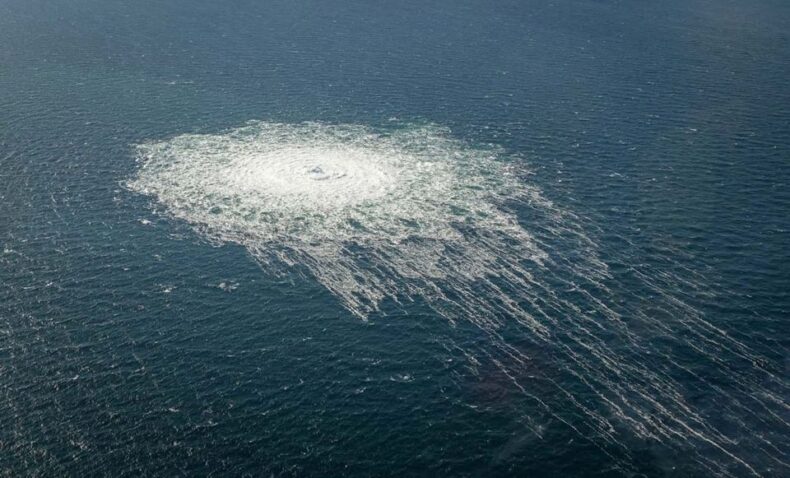Leaks were detected in the Nord Stream Pipelines that run from Russia to Europe through the Baltic sea, on Tuesday. This has raised accusations of Sabotage with the European Union accusing Russia. The pipelines are currently not in operation, but continue to hold large amounts of natural gas.
Following the discovery of two leaks on Nord Stream 1 (Danish and Swedish territory) and one in Nord Stream 2, the Danish Energy Agency upgraded the orange alert level, the second highest.

The Danish Authorities have informed all ships and planes that there is a 5 nautical mile prohibition zone around the leaks. According to Denmark, there is a chance of ignition and ships could get unbalanced from the gas escaping.
The seismologists from Denmark and Sweden have reported a recording of two powerful explosions on Monday near the pipeline leaks.
The Geological Survey of Denmark and Greenland (GEUS) reportedly said, “The signals do not resemble signals from earthquakes. They do resemble the signals typically recorded from blasts.”
The recordings of “more than 100 kilos (kg) of dynamite” were recorded from one of the explosions, further fueling speculations of sabotage.
Gas leaks in the Nord Stream pipelines are a cause of concern not only geopolitically but also environmentally. It has raised climate concerns, reported Reuters, and a fear of climate catastrophe has developed as the pipelines continue to leak large amounts of gas into the sea.
Although the extent of the damage the leaks will cause remain unclear, the inactive pipelines containing natural gas—mainly composed of methane, a greenhouse gas—continue to escape.
What is Nord Stream Pipeline?
Nord Stream gas pipeline consists of two natural gas pipeline systems, Nord Stream 1 and Nord Stream 2. The twin pipelines have the capacity to transport a combined total of about 55 billion cubic meters of gas a year, to meet the energy needs of European households.

The two pipelines are built parallel to each other in the Baltics sea carrying gas from Russia to Germany. The two pipelines remain a hot topic in the current geopolitical climate. While the operations of Nord Stream 1 were suspended in August of this year by Russia citing operational hurdles due to western sanctions, the Nord Stream 2 pipeline’s operations were halted when Germany blocked the initiative.
According to the Nord Stream website, its main aim is to secure gas supply for Europe, which consequently is also its tagline. Nord Stream pipelines transport gas from western Russia to the European gas grid for distribution. The company Nord Stream AG manages the day-to-day operations of the pipeline. The twin gas transportation system, each has the capacity to transport 27.5 billion cubic meters of natural gas a year. The pipeline is designed to operate for at least 50 years.
Geopolitics of Nord Stream
The news of gas leaks in Nord Stream 1 and 2 has heightened the tensions between Russia and the west. With the European Union accusing Russian President Putin of “deliberate sabotage.” The energy prices are expected to rise further as the unbalanced situation continues.
European Union head Ursula Von der Leyen has threatened the “strongest possible response” to any deliberate disruption of European energy infrastructure, calling the leaks “sabotage” on the energy security of Europe.

After Russia invaded Ukraine, the west including European Union imposed heavy sanctions on Russia and suspended energy imports from Russia. The Nord Stream pipeline projects are a major infrastructure medium through which Europe imported natural gas from Russia. The suspension of pipeline operations impacted Europe’s energy needs and also lead to skyrocketing oil prices all over the world.
The leaks in the Nord Stream pipeline spell a disaster in any normalization of the tensions between Russia and Europe, which are already at an all-time high. The environmental effect of the leaks is still to be ascertained, while geopolitics on the leaks will continue to be debated.













